
Ardèche Gorges: The Grand Canyon of Europe
Discover the Ardèche Gorges in France, a stunning natural wonder with dramatic cliffs, serene rivers, and ancient history, perfect for adventurers and nature lovers.
The Ardèche Gorges, often called the Grand Canyon of Europe, is a stunning natural wonder located in the south of France. Stretching over 30 kilometers, the deep and winding gorges have been carved out by the Ardèche River over millennia. This area is a paradise for nature lovers and adventure seekers alike, offering breathtaking views, dramatic cliffs, and a serene river that invites exploration. Visitors can enjoy a variety of activities, from canoeing and kayaking down the river to hiking along the numerous trails that crisscross the landscape. The highlight of the region is the Pont d’Arc, a natural stone arch that spans the river and stands as a monumental gateway to the gorges. This iconic landmark is perfect for photography and a must-see for anyone visiting the area. The Ardèche Gorges are also rich in history and culture. The nearby Chauvet-Pont-d'Arc Cave, a UNESCO World Heritage site, contains some of the earliest known prehistoric cave paintings, dating back over 30,000 years. Local villages offer a taste of traditional French life, with charming streets, local markets, and delicious regional cuisine. Whether you're looking for adventure, history, or simply a beautiful place to relax, the Ardèche Gorges provide an unforgettable experience.
Local tips in Ardèche Gorges
- Visit the Pont d’Arc early in the morning to avoid crowds and capture the best photos.
- Bring water and wear sturdy shoes if you plan to hike the trails; the terrain can be challenging.
- Consider a guided tour of the Chauvet-Pont-d'Arc Cave to fully appreciate its historical significance.
- Try the local cuisine, especially the chestnut-based dishes which are a regional specialty.
- If canoeing or kayaking, check the weather and water conditions in advance for a safe experience.
Ardèche Gorges: The Grand Canyon of Europe
The Ardèche Gorges, often called the Grand Canyon of Europe, is a stunning natural wonder located in the south of France. Stretching over 30 kilometers, the deep and winding gorges have been carved out by the Ardèche River over millennia. This area is a paradise for nature lovers and adventure seekers alike, offering breathtaking views, dramatic cliffs, and a serene river that invites exploration. Visitors can enjoy a variety of activities, from canoeing and kayaking down the river to hiking along the numerous trails that crisscross the landscape. The highlight of the region is the Pont d’Arc, a natural stone arch that spans the river and stands as a monumental gateway to the gorges. This iconic landmark is perfect for photography and a must-see for anyone visiting the area. The Ardèche Gorges are also rich in history and culture. The nearby Chauvet-Pont-d'Arc Cave, a UNESCO World Heritage site, contains some of the earliest known prehistoric cave paintings, dating back over 30,000 years. Local villages offer a taste of traditional French life, with charming streets, local markets, and delicious regional cuisine. Whether you're looking for adventure, history, or simply a beautiful place to relax, the Ardèche Gorges provide an unforgettable experience.
When is the best time to go to Ardèche Gorges?
Iconic landmarks you can’t miss
Le Pont d'Arc
Discover the breathtaking beauty of Le Pont d'Arc, a natural arch and iconic landmark in the Ardèche region of France, perfect for adventure and relaxation.

L’oustaou sous les Oliviers
Discover the charm of L'Oustaou sous les Oliviers, a unique blend of rustic cabins and historical significance in the heart of Vallon-Pont-d'Arc.

Grotte chauvet 2 - Ardèche
Explore Grotte Chauvet 2 in Ardèche, a stunning cultural landmark showcasing prehistoric art and the legacy of ancient humanity in a breathtaking setting.

Réserve Naturelle Nationale des Gorges de l'Ardèche
Explore the mesmerizing landscapes of Gorges de l'Ardèche, a stunning nature preserve perfect for adventure and relaxation in southern France.
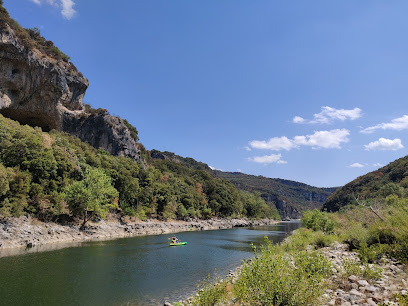
Aven d'Orgnac
Experience the breathtaking Aven d'Orgnac, where ancient caves and archaeological wonders come together to reveal the secrets of Earth's past.

Grotte Saint-Marcel
Explore the stunning subterranean beauty of Grotte Saint-Marcel, a historical gem in the heart of Ardèche, France, rich in geological wonders and ancient history.

Roure Castle
Discover the enchanting Roure Castle in Labastide-de-Virac, a historical gem offering rich culture and family-friendly activities.

Grotte de la Madeleine
Discover the breathtaking Grotte de la Madeleine, a stunning cave system in the Gorges de l'Ardèche, rich in natural beauty and geological wonders.

Grotte Aven Forestière : Grotte en Ardèche
Explore the breathtaking underground beauty of Grotte Aven Forestière in Ardèche, France, a mesmerizing natural wonder filled with stunning geology.

Descent of the Ardèche
Explore the stunning gorges of the Ardèche River through an unforgettable canoe and kayak descent, perfect for adventurers and nature lovers alike.

Belvédère du Cros de l'Olivier
Experience breathtaking views and serene nature at Belvédère du Cros de l'Olivier in Saint-Remèze, a must-see observation deck in the heart of France.

Aven d'Orgnac Grand site de France, Cité de la Préhistoire
Explore Aven d'Orgnac Grand Site de France, where prehistoric wonders and ancient civilizations await in the heart of France's Ardèche region.

Gorges de l'Ardèche
Explore the magnificent Gorges de l'Ardèche, a stunning ravine in France perfect for outdoor adventures and breathtaking views of nature's beauty.
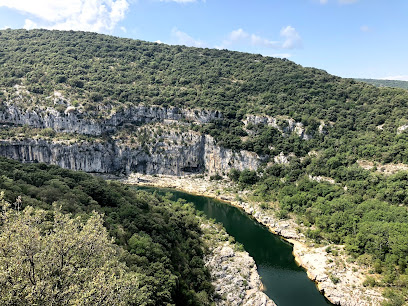
Belvédère des Templiers
Discover the breathtaking vistas at Belvédère des Templiers, a must-visit observation deck in Saint-Remèze, showcasing the stunning beauty of the French countryside.

Les gorges
Discover the breathtaking beauty of Les Gorges in Saint-Remèze, France – a nature lover's paradise with stunning landscapes and outdoor adventures.

Unmissable attractions to see
Le Pont d'Arc
Discover the breathtaking beauty and historical significance of Le Pont d'Arc, a stunning natural arch in the heart of Vallon-Pont-d'Arc, France.

Grotte chauvet 2 - Ardèche
Explore the stunning prehistoric cave art at Grotte Chauvet 2 in Vallon-Pont-d'Arc, a UNESCO World Heritage site perfect for history and art lovers.

Parc Naturel Régional des Monts d'Ardèche - Maison du Parc
Discover the breathtaking landscapes and rich biodiversity of Parc Naturel Régional des Monts d'Ardèche, a paradise for nature lovers and adventurers.

Réserve Naturelle Nationale des Gorges de l'Ardèche
Discover the breathtaking beauty and adventure of the Réserve Naturelle Nationale des Gorges de l'Ardèche, a must-visit for nature lovers.

Aven d'Orgnac
Explore the stunning caves and rich history at Aven d'Orgnac, a captivating tourist attraction in Orgnac-l'Aven, France.

Grotte de la Cocalière
Explore Grotte de la Cocalièree: an awe-inspiring natural cave filled with stunning geological formations and rich history in the heart of France.

Grotte Saint-Marcel
Explore the enchanting Grotte Saint-Marcel in Ardèche, France - a mesmerizing cave system filled with stunning geological formations and rich history.

Maison de la Lavande
Experience the enchanting world of lavender at Maison de la Lavande – a fragrant museum in the heart of Saint-Remèze, France.

Pont de Balazuc
Explore the stunning Pont de Balazuc, a medieval bridge that offers breathtaking views and a glimpse into the rich heritage of the Ardèche region.

Grotte de la Salamandre
Explore the breathtaking Grotte de la Salamandre, a natural wonder in France featuring stunning cave formations and beautiful nature trails.

Roure Castle
Discover the enchanting Roure Castle in Labastide-de-Virac, a captivating historical landmark filled with rich stories and breathtaking views.

Belvédère du Serre de Tourre
Experience the breathtaking panoramic views at Belvédère du Serre de Tourre, a premier observation deck in the heart of the Ardeche region.

Grotte de la Madeleine
Explore the stunning Grotte de la Madeleine in Ardèche, France, home to mesmerizing rock formations and rich prehistoric history.

Canyon base Besorgues: Adventure Holidays Ardèche
Discover thrilling outdoor adventures at Canyon Base Besorgues, the ultimate destination for canyoning, rock climbing, and more in Ardèche.

Medieval Castle of Saint Montan
Discover the charm and history of the Medieval Castle of Saint Montan, a stunning tourist attraction nestled in the heart of southern France's picturesque landscapes.

Essential places to dine
Restaurant Chez Léon
Discover authentic French cuisine at Restaurant Chez Léon in Vallon-Pont-d'Arc – where every dish tells a story.
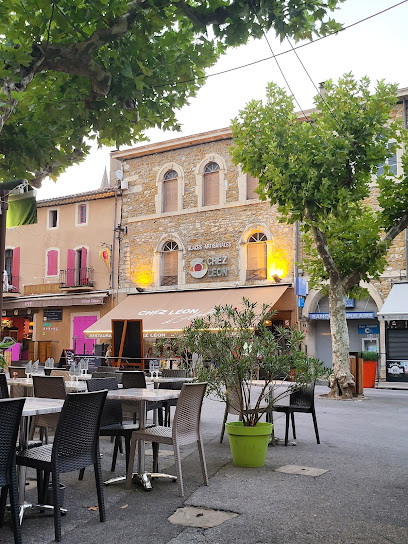
Restaurant Les Tilleuls
Experience authentic French cuisine at Restaurant Les Tilleuls in Lagorce, where every dish tells a story of tradition and flavor.

Restaurant La Grotte Des Tunnels
Experience exquisite barbecue and authentic French cuisine at Restaurant La Grotte Des Tunnels in Vallon-Pont-d'Arc - A culinary delight amidst stunning landscapes.
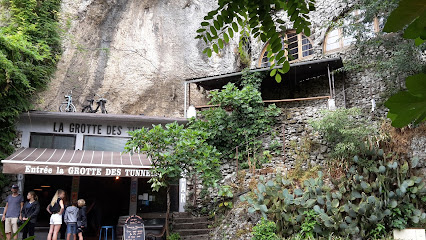
Le Resto du Village
Experience authentic French cuisine at Le Resto du Village in Vallon-Pont-d'Arc, where every dish tells a story and every meal is an adventure.

Le Petit Jardin
Experience authentic French cuisine at Le Petit Jardin in Vallon-Pont-d'Arc - a culinary journey filled with local flavors and charm.

Restaurant Le Pont des Mazes
Experience authentic French cuisine amidst the stunning landscapes of Vallon-Pont-d'Arc at Restaurant Le Pont des Mazes.
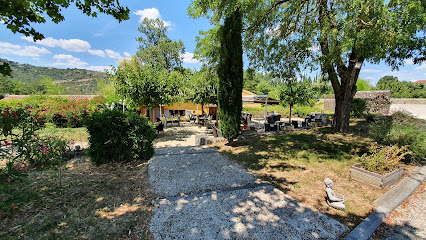
Auberge du Pont d'Arc
Discover authentic French cuisine at Auberge du Pont d'Arc in Vallon-Pont-d'Arc, where every dish tells a story of tradition and flavor.

Le 14
Experience the best of French gastronomy at Le 14 in Vallon-Pont-d'Arc - where exquisite flavors meet warm hospitality.

Le Restaurant Bar à Vin de Chames
Experience exquisite French cuisine and fine wines at Le Restaurant Bar à Vin de Chames in beautiful Vallon-Pont-d'Arc.

Le Picourel
Experience the finest French and Mediterranean cuisine at Le Picourel in Vagnas - a culinary gem for every traveler.

Restaurant le Camargue
Experience authentic French cuisine amidst stunning landscapes at Restaurant le Camargue in Saint-Martin-d'Ardèche.

Bistrot Cayou
Discover the authentic flavors of France at Bistrot Cayou in Vallon-Pont-d'Arc – where every meal is a celebration.

La Paillote
Experience exquisite French cuisine at La Paillote in Saint-Martin-d'Ardèche—where every meal is enhanced by stunning views and local charm.

Auberge La Farigoule
Experience authentic French cuisine at Auberge La Farigoule in Bidon – where tradition meets flavor in a picturesque setting.

Le Domaine des Dames
Experience exquisite French cuisine at Le Domaine des Dames in Vallon-Pont-d'Arc – a perfect blend of dining and relaxation.

Markets, malls and hidden boutiques
Nougaterie Pont d'Arc
Explore the sweet world of Nougaterie Pont d'Arc, where artisanal nougats and gourmet treats await in the heart of Vallon-Pont-d'Arc.

Biscuiterie Les Châtaignettes
Experience the sweet taste of tradition at Biscuiterie Les Châtaignettes in Vallon-Pont-d'Arc, where artisanal biscuits come to life.

Zone Libre Orient Shop
Explore Vallon-Pont-d'Arc's premier gift shop for unique treasures, artisan crafts, and elegant furniture that embody the region's charm.
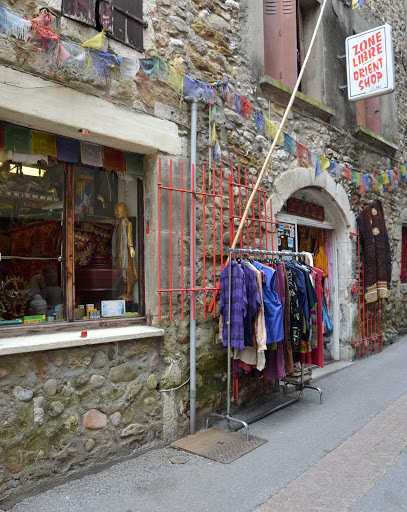
Au Pays des Ânes
Explore Au Pays des Ânes, a unique cosmetics and organic shop in Vallon-Pont-d'Arc, where nature meets beauty in every product.

Ardeche cadeaux
Discover unique souvenirs and local artisan products at Ardeche Cadeaux, your go-to gift shop in the heart of Ruoms, France.

One and One
Discover unique men's fashion, accessories, and gifts at One and One in Vallon-Pont-d'Arc - the ultimate shopping experience for style enthusiasts.

Les douceurs de Marie
Discover Les douceurs de Marie in Vallon-Pont-d'Arc, where exquisite home goods and local delicacies come together in a delightful shopping experience.
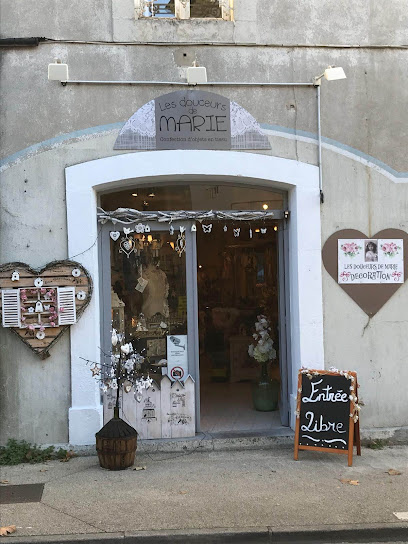
CBD'IN VALLON PONT D'ARC
Visit CBD'IN Vallon Pont d'Arc for an exceptional selection of premium CBD products in a picturesque French town.

Cocoon Vallon 9 avenue Jean Jaurès 07150 Vallon pont d'Arc et le 9 Avenue Jean Jaurès
Discover the latest women's fashion trends at Cocoon Vallon, your go-to destination for stylish clothing and accessories in Vallon-Pont-d'Arc.

Cielarka
Discover unique gifts and local treasures at Cielarka, the charming gift shop in Vallon-Pont-d'Arc, perfect for tourists seeking authentic souvenirs.

Lou et Compagnie
Explore the charm of Lou et Compagnie in Vallon-Pont-d'Arc - a must-visit store for unique souvenirs and local treasures.

La boutique de Meryle
Explore unique fashion and accessories at La Boutique de Meryle in Vallon-Pont-d'Arc, offering a delightful shopping experience amidst French charm.

Vallon Boutik
Explore Vallon Boutik in Vallon-Pont-d'Arc for top-notch fishing gear and unique local gifts, perfect for outdoor enthusiasts and souvenir collectors.

One More Time
Explore the charm of Vallon-Pont-d'Arc at One More Time, where vintage treasures and unique finds await every visitor.

Boutique Bambou
Discover unique treasures and local crafts at Boutique Bambou, your go-to home goods store in Vallon-Pont-d'Arc.

Essential bars & hidden hideouts
Restaurant La Grotte Des Tunnels
Experience the best of French and barbecue cuisine at La Grotte Des Tunnels, a must-visit restaurant in Vallon-Pont-d'Arc.

Le Restaurant Bar à Vin de Chames
Experience exquisite French cuisine and an exceptional wine selection at Le Restaurant Bar à Vin de Chames in Vallon-Pont-d'Arc, a true culinary delight.

Tom Pouce Cafe
Experience the delightful flavors and vibrant atmosphere of Tom Pouce Cafe, the perfect spot for tourists in Vallon-Pont-d'Arc.

Lézard café et mini golf du Chastelas
Experience culinary delights and fun at Lézard Café et Mini Golf du Chastelas in Vallon-Pont-d'Arc, where dining meets entertainment in a beautiful setting.

La Plage
Experience the vibrant atmosphere of La Plage in Ruoms, a bar where refreshing drinks and local culture meet for an unforgettable evening.

O tapas’oif
Experience the vibrant flavors of Spain at O tapas’oif, a must-visit tapas bar in Vallon-Pont-d'Arc, perfect for culinary enthusiasts.

Bar le verger
Experience the charm of Bar le Verger in Vallon-Pont-d'Arc, where local flavors and vibrant atmosphere come together to create an unforgettable retreat.
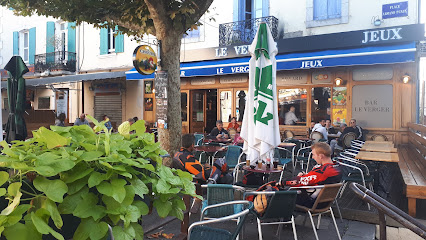
Krügs Brewpub
Discover the vibrant atmosphere and exceptional brews at Krügs Brewpub in Ruoms, where local flavors meet a warm, inviting ambiance.

Bar Le Chastelas
Discover the vibrant spirit of Vallon-Pont-d'Arc at Bar Le Chastelas, where exceptional drinks and a lively atmosphere await every visitor.

Le Saint Louis
Discover the heart of Ruoms at Le Saint Louis, a cozy bar offering local drinks and a friendly atmosphere for tourists and locals alike.

La Fresque - Bar / Restaurant
Experience the culinary delights of La Fresque, a vibrant bar and restaurant in Salavas offering stunning river views and a diverse menu.

Restaurant l'Embarcadère des Gorges
Discover the flavors of Vallon-Pont-d'Arc at Restaurant l'Embarcadère des Gorges, where local cuisine meets stunning natural beauty.
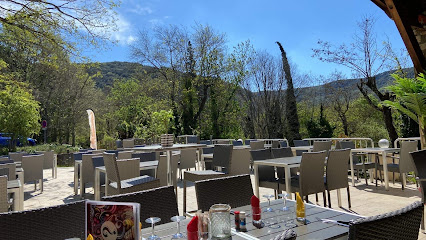
La Brasserie du Pont d'Arc - Gorges de l'Ardèche
Discover the flavors of Vallon-Pont-d'Arc at La Brasserie du Pont d'Arc, a top brewpub offering craft beers and cocktails in the stunning Gorges de l'Ardèche.
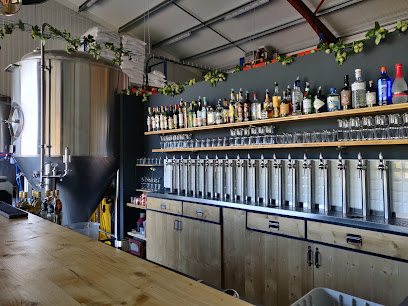
La Fa'Briquette
Discover the best of local craft brewing at La Fa'Briquette in Vagnas, where unique flavors and a welcoming atmosphere await you.
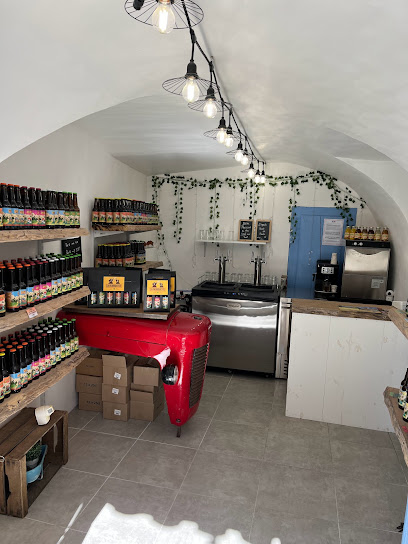
Bar Le Petit Verdot
Experience the best of French wines at Bar Le Petit Verdot, a cozy wine bar in Barjac, perfect for relaxation and social gatherings.

Local Phrases about Ardèche Gorges
-
- HelloBonjour
[bon-zhoor] - GoodbyeAu revoir
[oh rev-wah] - YesOui
[wee] - NoNon
[non] - Please/You're welcomeS'il vous plaît
[seel voo pleh] - Thank youMerci
[mehr-see] - Excuse me/SorryExcusez-moi
[ex-kew-zay mwa] - How are you?Comment ça va?
[koh-mon sah vah] - Fine. And you?Bien. Et vous?
[byan. ay voo] - Do you speak English?Parlez-vous Anglais?
[par-lay voo ahn-glai] - I don't understandJe ne comprends pas
[zhuh nuh kohm-prahn pah]
- HelloBonjour
-
- I'd like to see the menu, pleaseJe voudrais voir le menu, s'il vous plaît
[zhuh voo-dray vwahr luh meh-nyoo, seel voo pleh] - I don't eat meatJe ne mange pas de viande
[zhuh nuh mahnj pah duh vyand] - Cheers!Santé!
[sahn-tay] - I would like to pay, pleaseJe voudrais payer, s'il vous plaît
[zhuh voo-dray pay-yay, seel voo pleh]
- I'd like to see the menu, pleaseJe voudrais voir le menu, s'il vous plaît
-
- Help!Au secours!
[oh suh-koor] - Go away!Allez-vous en!
[ah-lay voo zahn] - Call the Police!Appelez la Police!
[ah-pay-lay lah poh-lees] - Call a doctor!Appelez un médecin!
[ah-pay-lay uhn meh-deh-sahn] - I'm lostJe suis perdu
[zhuh swee pair-doo] - I'm illJe suis malade
[zhuh swee mah-lahd]
- Help!Au secours!
-
- I'd like to buy...Je voudrais acheter...
[zhuh voo-dray ah-shet-ay] - I'm just lookingJe regarde juste
[zhuh ruh-gard zhust] - How much is it?Combien ça coûte?
[kohm-byen sah koot] - That's too expensiveC'est trop cher
[say troh shehr] - Can you lower the price?Pouvez-vous baisser le prix?
[poo-vay voo bay-say luh pree]
- I'd like to buy...Je voudrais acheter...
-
- What time is it?Quelle heure est-il?
[kell uhr eh-teel] - It's one o'clockIl est une heure
[eel eh tuhn uhr] - Half past (10)Dix et demi
[dees ay dehm-ee] - MorningMatin
[mah-tahn] - AfternoonAprès-midi
[ah-pray mee-dee] - EveningSoir
[swahr] - YesterdayHier
[yehr] - TodayAujourd'hui
[oh-zhoor-dwee] - TomorrowDemain
[duh-man] - 1Un
[uhn] - 2Deux
[duh] - 3Trois
[twah] - 4Quatre
[kat] - 5Cinq
[sank] - 6Six
[sees] - 7Sept
[set] - 8Huit
[weet] - 9Neuf
[nuf] - 10Dix
[dees]
- What time is it?Quelle heure est-il?
-
- Where's a/the...?Où est...?
[oo eh] - What's the address?Quelle est l'adresse?
[kell eh lah-dress] - Can you show me (on the map)?Pouvez-vous me montrer (sur la carte)?
[poo-vay voo muh mohn-tray (sur lah kart)] - When's the next (bus)?Quand est le prochain (bus)?
[kahn eh luh proh-shahn (bus)] - A ticket (to ....)Un billet (pour ...)
[uhn bee-yay (poor)]
- Where's a/the...?Où est...?
History of Ardèche Gorges
-
The Ardèche Gorges are home to some of the most significant prehistoric sites in Europe. The Chauvet Cave, discovered in 1994, contains some of the earliest known cave paintings, dating back over 30,000 years. These stunning artworks provide invaluable insights into the lives and beliefs of early humans.
-
During the Roman era, the Ardèche region was part of the Roman province of Gallia Narbonensis. The Romans left their mark on the area with infrastructure such as roads and bridges. The remnants of these constructions can still be seen today, reflecting the strategic importance of the region in ancient times.
-
In the Middle Ages, the Ardèche Gorges were dotted with fortresses and castles. These fortifications were built to protect the region from invasions and to control trade routes. The Château de Vogüé is one of the well-preserved medieval castles that stands as a testament to this tumultuous period.
-
During the 16th and 17th centuries, the Ardèche Gorges served as a refuge for Huguenots fleeing religious persecution. The rugged terrain provided a natural fortress for these Protestant dissenters, who established hidden communities and places of worship in the area.
-
The advent of the Industrial Revolution brought significant changes to the Ardèche region. The gorges' natural resources, especially its waterways, were harnessed to power mills and factories. This period saw the development of industries such as silk weaving, which left a lasting economic impact on the region.
-
In the 20th century, the Ardèche Gorges became a focal point for conservation efforts. Recognizing the area's unique ecological and historical value, local and national authorities implemented measures to preserve its natural beauty and archaeological treasures. Today, the gorges are a protected area, attracting tourists and researchers from around the globe.
Ardèche Gorges Essentials
-
Ardèche Gorges is located in the Ardèche department in the Auvergne-Rhône-Alpes region of France. The nearest major airports are Lyon-Saint Exupéry Airport and Marseille Provence Airport, both of which are about a 2.5 to 3-hour drive from the gorges. From these airports, you can rent a car or take a train to nearby towns such as Vallon-Pont-d'Arc or Saint-Martin-d'Ardèche. Alternatively, you can take a train to Montélimar or Avignon and then a bus or taxi to your final destination.
-
Once you arrive in the Ardèche region, the best way to explore the gorges is by car. Car rentals are available in nearby towns and at major airports. Public buses and shuttles operate in the area, especially during the peak tourist season, but they may not cover all the scenic spots. For a more immersive experience, consider renting a bike or a canoe to navigate the gorges. Guided tours are also available for those who prefer a hassle-free experience.
-
The official currency in France is the Euro (EUR). Credit cards are widely accepted in hotels, restaurants, and shops in the Ardèche region. However, it is advisable to carry some cash, especially when visiting smaller villages or engaging in outdoor activities. ATMs are available in larger towns such as Vallon-Pont-d'Arc and Saint-Martin-d'Ardèche.
-
Ardèche Gorges is generally a safe destination for tourists. However, it is important to take standard precautions to ensure your safety. Avoid leaving your belongings unattended and be cautious in crowded areas. There are no specific high-crime areas targeting tourists, but it is always best to stay vigilant and aware of your surroundings. When engaging in outdoor activities such as hiking or canoeing, ensure you have the necessary equipment and information about the area.
-
In case of emergency, dial 112 for immediate assistance. Local police stations and medical facilities are available in nearby towns such as Vallon-Pont-d'Arc. It is recommended to have travel insurance that covers medical emergencies. For minor health issues, there are pharmacies in the area where you can purchase over-the-counter medications. Make sure to carry a basic first aid kit, especially if you plan on hiking or engaging in other outdoor activities.
-
Fashion: Do dress comfortably and wear appropriate footwear for outdoor activities. Avoid wearing overly revealing clothing when visiting villages or interacting with locals. Religion: Do respect local customs and traditions. While the area is not particularly religious, it is always good practice to be respectful when visiting churches or historical sites. Public Transport: Do be respectful and patient when using public transport. Don’t be loud or disruptive. Greetings: Do greet people with a friendly 'Bonjour' (Good day) and a handshake. Don’t be overly familiar or intrusive. Eating & Drinking: Do try local specialties like goat cheese and chestnut products. Don’t refuse food or drink offerings, as it may be considered impolite.
-
To experience Ardèche Gorges like a local, visit the weekly markets in nearby towns where you can buy fresh produce and artisanal products. Engage with local vendors and residents, who are often friendly and willing to share stories about the region's history and culture. Take the time to explore lesser-known trails and viewpoints for a more intimate experience of the gorges. Don't miss out on trying local wines and culinary specialties, and consider taking a guided tour for deeper insights into the area.
Trending Landmarks in Ardèche Gorges
-
Le Pont d'Arc
-
L’oustaou sous les Oliviers
-
Grotte chauvet 2 - Ardèche
-
Réserve Naturelle Nationale des Gorges de l'Ardèche
-
Aven d'Orgnac
-
Grotte Saint-Marcel
-
Roure Castle
-
Grotte de la Madeleine
-
Grotte Aven Forestière : Grotte en Ardèche
-
Descent of the Ardèche
-
Belvédère du Cros de l'Olivier
-
Aven d'Orgnac Grand site de France, Cité de la Préhistoire
-
Gorges de l'Ardèche
-
Belvédère des Templiers
-
Les gorges
Nearby Cities to Ardèche Gorges
-
Things To Do in Nîmes
-
Things To Do in Montpellier
-
Things To Do in Aix-en-Provence
-
Things To Do in Grenoble
-
Things To Do in Marseille
-
Things To Do in Lyon
-
Things To Do in Saint-Tropez
-
Things To Do in Annecy
-
Things To Do in Cannes
-
Things To Do in Nice
-
Things To Do in Geneva
-
Things To Do in Les Moneghetti
-
Things To Do in Moneghetti
-
Things To Do in La Condamine
-
Things To Do in Fontvieille











